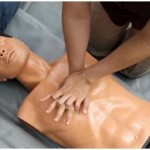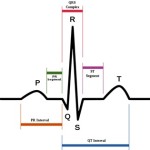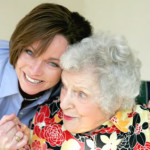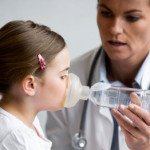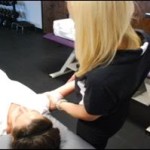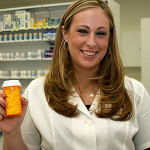A walking pneumonia is a mild pneumonia that does not require hospitalization. You can have walking pneumonia and not even know it. In this text you can find out what causes this illness, how it spreads, and what you can do to avoid it.
What is walking pneumonia?
Walking pneumonia is actually non-medical term to describe a mild case of pneumonia. Walking pneumonia can be also called atypical pneumonia because the disease is different from more serious cases of pneumonia caused by typical bacteria.
The pneumonia itself is a disease of the lungs that often results from a lung infection. Many things can cause pneumonia, including:
- Bacteria
- Viruses
- Fungi
- Infection agens such ad mycoplasma
- Chemicals
- Inhaled food
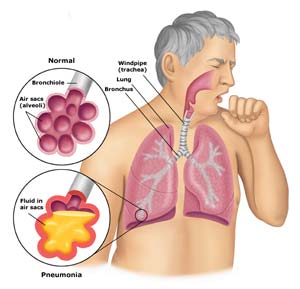 This type of pneumonia can be a result of a lung infection form a bacterial microorganism called Mycoplasma pneumoniae. Most of the people that have walking pneumonia are seldom confined to bed or need to be hospitalized. On the other hand some of them may feel well enough go to work and carry on with other regular routines, just as they might with a cold.
This type of pneumonia can be a result of a lung infection form a bacterial microorganism called Mycoplasma pneumoniae. Most of the people that have walking pneumonia are seldom confined to bed or need to be hospitalized. On the other hand some of them may feel well enough go to work and carry on with other regular routines, just as they might with a cold.
Walking pneumonia- who gets? How do you catch it?
It doesn’t matter the age, anyone can get walking pneumonia. The only difference is that walking pneumonia from mycoplasma is most common and can appear more in children and adults younger than 40.
The risk is higher of getting walking pneumonia from those people that live in crowded places, such as schools, homeless shelters and prisons. Walking pneumonia is contagious and it’s spread when someone comes in contact with droplets from the nose and throat of someone who has it. The chances of spreading around walking pneumonia are bigger when the person with walking pneumonia sneezes or coughs.
Late summer or fall are the seasons are when walking pneumonia is most prevalent, and there are more cases with walking pneumonia than usual. Some infections can occur with no particular pattern throughout the year. The disease is contagious and it spreads very slowly. When it comes to the contagious period we can say that in most cases lasts less than 10 days. Most of the researchers think that it takes prolonged close contact with an infected person for someone else to develop walking pneumonia; there are widespread outbreaks every four to eight years. Every eight years when those outbreaks occur, walking pneumonia can account for as many as one of every two cases of pneumonia.
What are the Symptoms Of Walking Pneumonia?
Symptoms generally appear 15-25 days after exposure to the mycoplasma and develop slowly over a period of two to four days. These symptoms include:
- Cough that is followed with violent spasm but produce very little mucus
- You may have mild flu symptoms such as fever and chills
- Sore throat
- Headache
- Tiredness
- After other symptoms go away you may feel lingering weaknesses
There are cases where people with walking pneumonia have an ear infection, anemia or a skin rash. These are rare cases, but in order to be sure these patients must call their doctor for further examinations.
Treatment For Walking Pneumonia
Most of the cases are cured on their own, if the patient is in a very bad condition than the doctor will prescribe antibiotics in a form of pills or if that is not going to help than an intravenous antibiotic therapy is going to be prescribed. Here are some helpful tips you may consider:
- If you notice any symptoms you should consult your doctor for further help. These symptoms are flu-like; medication meant for treatment is no going to help.
- You have to adhere strictly to the treatment regime that is prescribed by your doctor. You may thought that this mild form of pneumonia does not make a patient bedridden, you meant wrong, it still can get complicated if not given proper attention.
- The effect is bigger when you are controlling the outbreak of this disease. If the patient that is diagnosed with walking pneumonia use a mask, or covers his/her mouth and nose for a few days (especially when the person is talking to somebody that is healthy) till the time he/she recovers completely.
- You should trust you doctor and follow his order, especially in context to your advised dietary habits.


